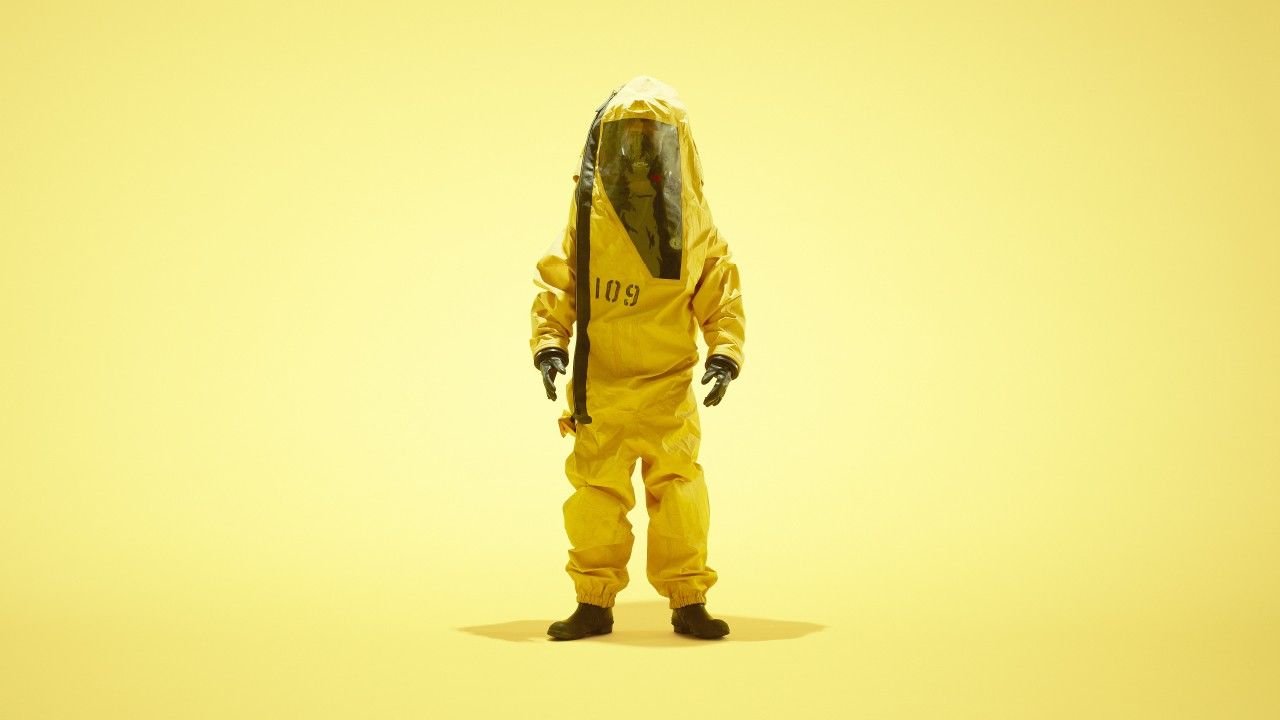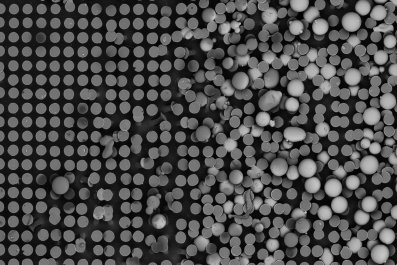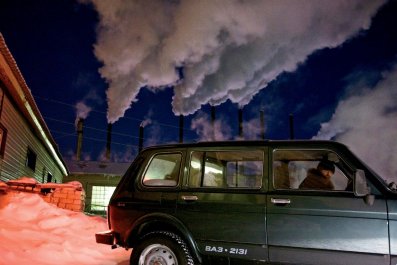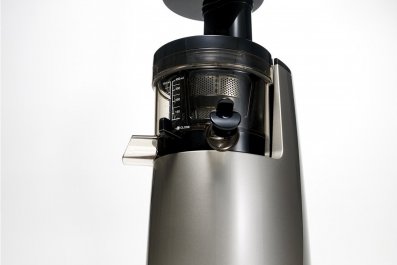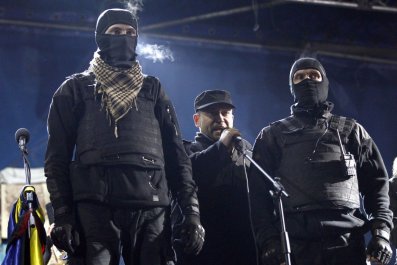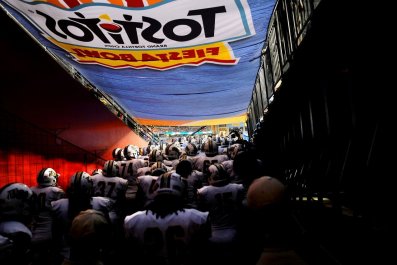It was spring 1979 in Sverdlovsk, Russia, a large industrial city straddling the border of Europe and Asia in what was then the Soviet Union. Without warning, 96 residents became ill, with symptoms similar to a severe flu: fever and chills, sore throat and headaches, with some nausea and vomiting. Just the usual one-week flu...except in this case, many of the people who got sick-at least 64-died within six weeks.
In the months following this alarming turn, Soviet medical, veterinary and legal journals all attributed the illnesses to an outbreak of anthrax originating in livestock raised south of the city. Government officials concurred, announcing that anyone who had contracted anthrax either ate contaminated meat or handled animals infected with the disease (the bacteria cannot be spread from person to person).
Anthrax, however, rarely appears out of thin air, and in the West speculation grew about a cover-up. The U.S. Department of Defense and the Central Intelligence Agency believed the anthrax infections stemmed from a biological weapons laboratory the Soviet Union had built in the city—implicitly accusing the Kremlin of violating the Biological Weapons Convention signed in 1972. In turn, the Soviets denied conducting biological weapons activities and scrambled to prop up their contaminated meat story at international conferences. Intense debate about the incident raged in both scientific and government circles.
Thirteen years later, then Russian president Boris Yeltsin finally admitted that a military research facility near the city (since renamed Ekaterinburg) had accidentally released spores of "Anthrax 836" into the air. Later still, the former first deputy chief of the civilian part of the Soviet biological weapons program told PBS Frontline that the leak occurred because workers forgot to replace a filter in the facility's exhaust system. He also said that had the wind been blowing in a different direction the day of the leak, hundreds of thousands could have died.
What became known as the "biological Chernobyl" should have taught the world a lesson. But in the United States today, there are hundreds of laboratories sprinkled across the country working on the exact same type of bioweapons research, with equally dangerous biological materials, in a regulatory environment that some say could blow up with an equally devastating event.
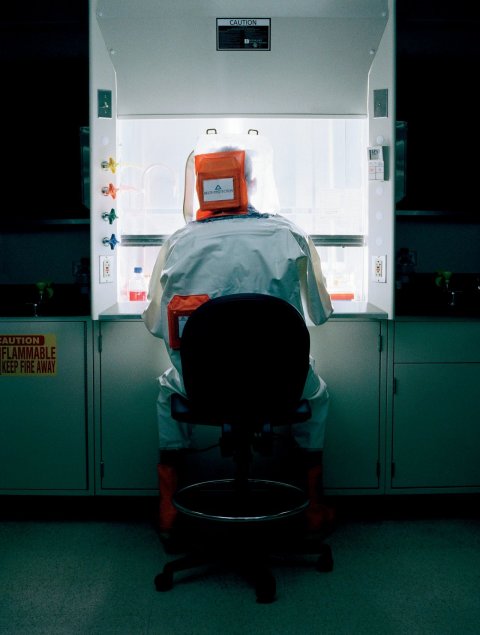
Anthrax Spores in the Mail
In great secrecy, the United States has spent billions on the Project BioShield Act, a program meant to keep its citizens safe from bioterrorists. Despite these good intentions, that program may have put the nation at greater risk of a homegrown disease escaping from a lab and quickly infecting millions. That's because while the real threat of bioterror is minimal—there have been only a handful of such attacks in modern history, and none since 2001—the risk of bio-error is actually quite high.
The BioShield Act was written in the frenzied wake of September 11, 2001, after letters containing anthrax spores were mailed to media companies and two U.S. senators, killing five and infecting 17 others. When the act was being shepherded through Congress in 2003, there was a global SARS outbreak, a viral infection that spread within weeks to 26 countries and caused more than 8,000 infections and 774 deaths.
Representative Jim Turner (D-Texas), a ranking member of the Committee on Homeland Security, opened the 2003 congressional hearing with an alarmist screed, claiming, "We know there was a very active biological weapons program in the former Soviet Union where they developed at least 30 deadly agents, but we do not know if the stockpiles created are secure. We know that Saddam Hussein had a biological warfare program that produced massive amounts of biological agents. Thus far, we have not been able to find them."
Whipped into a froth, the Senate and House hastily approved the act with nearly unanimous votes.
The goal of BioShield was, and remains, to protect public health during a biological disaster so catastrophic that it might affect national security. It works, essentially, by providing funds to the Department of Health and Human Services (HHS) to develop and acquire medicines for the civilian population in the event of an emergency caused by biological, chemical, radiological or nuclear agents.
Given the peculiarly volatile nature of the things being researched and the limited market (even that is optimistic) for the resulting drugs, the act had to adjust the ways in which these medicines were researched and developed. Most important, and worrisome, it had to speed up the process. Like many laws forged in the heat of war, BioShield was framed in terms of life-saving urgency, and that meant removing many of the roadblocks that regulate how labs do their research and develop new drugs.
The problem is that those safeguards are carefully crafted to protect the public. Normally, the Food and Drug Administration (FDA) approves a medicine only after its team of physicians, statisticians, chemists and pharmacologists has reviewed extensive testing data and determined that its health benefits outweigh known risks. To speed up its acquisition of rare drugs, the act has set up what amounts to an FDA fast-track review process. Some of these bio-terror drugs also have what is known as emergency-use authorization, which means testing has not been completed but they could still be used if there were an attack.
In 2010, the Public Readiness and Emergency Preparedness Act was passed to add liability protection to companies producing these drugs. It's easy to imagine someone becoming seriously ill from a less than perfectly tested vaccine and then putting a small biotech company out of business with a lawsuit. This regulatory concession creates an incentive for companies to pursue otherwise risky drug research.
As a result of these shortcuts, some of the drugs acquired under BioShield have not been subject to the usual consumer protections of regulation as well as natural marketplace corrections—consumers don't buy a medicine with bad side effects.
In 2003, only one member of Congress spoke out against the act: Donna Christensen, who, as the delegate of the U.S. Virgin Islands, did not get a vote. "[This] appears to be another attempt to bypass congressional oversight," she said, going on to ask for a legitimate reason why "good science as the basis of decisions should be allowed to be compromised."
Christensen was prescient. Though BioShield's initial goals made sense when the threat of biological warfare seemed imminent, the act may have permanently undermined some of the essential protections against unsafe practices in at least one area of science research: the regulations that keep untested drugs off the market, and labs from leaking deadly biological agents into the environment.
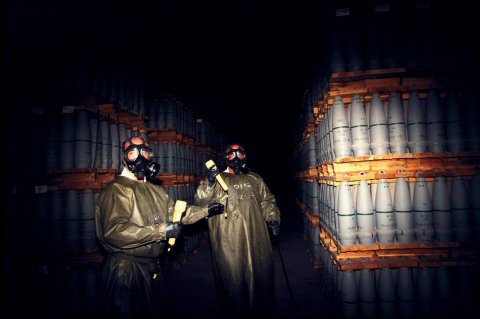
Creating a Weaponized Virus
Much of the work funded under BioShield is bio-defensive—intended to be used in a biological emergency to cure those who have been infected, and to stop the spread of disease by preventing infection in others.
The intriguing and potentially lethal paradox there is that in order to learn how a particular infection causes morbidity, says Dr. Gigi Kwik Gronvall, a senior associate at the UPMC Center for Health Security, "you're also learning how to inflict that [same infection]. You're learning where the switches are." Treatments—particularly vaccines—are usually reverse-engineered: scientists take a pathogen like a bacteria or virus and work with it in the lab until they know how to defeat it, often using parts of the infectious agent itself in the treatment.
That's easy enough when dealing with agents researchers already know about (such as anthrax and smallpox), but when it comes to bioterrorism, researchers also need to investigate what former defense secretary Donald Rumsfeld might have called the known unknowns. That's why, along with funding the cures, the HHS is also funding the creation of new bio-weapons, to be used to pre-emptively develop cures and vaccines for diseases that might break out in the future.
In other words, to create a drug to counteract what people in the bio-terrorism world call a weaponized virus, researchers must know how to create a weaponized virus: devise a delivery system that infects as many initial hosts as possible, and mutate the agent so it spreads from person to person even more quickly than nature intended.
Even a small vial of some of this stuff can be devastating, and these deadly agents can be easily let loose on the public.
In 1971, a Soviet research ship puttered around the Aral Sea—basically a lake between current day Kazakhstan and Karakalpakstan—taking samples of aquatic life from the cold waters. One lab technician would dredge up plankton samples twice a day, and by the time the vessel docked at the Kazakhstani city of Aral, she had a fever, headache and muscle pain. The young technician went home but then developed a severe cough and temperature; her doctor prescribed aspirin and antibiotics. Days later, a rash appeared on her face and back.
It was a telltale sign of smallpox, one of the deadliest diseases in human history.
The technician had been vaccinated for smallpox, so she survived—as did her 9-year-old brother, to whom she had unwittingly passed the infection. However, two children and one adult infected by the same strain of smallpox died soon afterward. A massive public health response ensued: 50,000 residents of Aral were immediately vaccinated, and quarantines were enacted all over the city within two weeks.
Years later, Pyotr Burgasov, a Soviet general and a former senior researcher in the Soviet bioweapons program, told the Russian press that the Soviets had been testing weaponized smallpox formulas on the island of Vozrozhdeniya, about 10 miles from where the ship had trawled. About 3.5 cups of smallpox in powder form had "exploded on the island," according to Burgasov. By the time it was in the plankton, though, the amount of smallpox virus that infected the technician was probably microscopic-but enough to quickly create a 150-mile radius area of contamination.
Smallpox is a deadly and highly infectious disease, one of a handful of "select agents" on the HHS list of biological toxins that pose a severe threat to human, animal and plant health. It has been entirely eradicated from nature but lives on in research labs.
Many people, both domestic and abroad, have called for the U.S. to destroy its smallpox stockpile. (Russia and the U.S. are the only two countries that say on the record they hold samples of the virus.) "We fully agree that these samples should-and eventually will-be destroyed," wrote Secretary of Health and Human Services Kathleen Sebelius in a 2011 New York Times op-ed titled "Why We Still Need Smallpox." "However, we also recognize that the timing of this destruction will determine whether we continue to live with the risk of the disease re-emerging through deliberate misuse of the virus by others."
In other words, the U.S. is keeping its smallpox virus alive just in case somebody else decides to turn it into a weapon. Under the BioShield Act, HHS will not only maintain that virulent stockpile; it will also continue to make fate-tempting experiments in anticipation of its re-emergence.
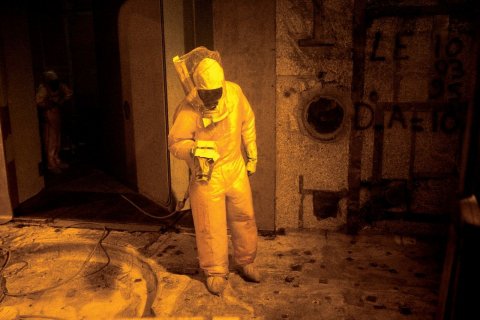
Armed Guards, 24 Hours a Day
"Fear of not having offensive bio-weapons when others have them can motivate a self-defensive offensive bio-weapons arms race, as existed between the USA and the former Soviet Union during the Cold War," wrote Allen Buchanan and Maureen C. Kelley in a recent paper on the ethics of biodefense and what they call "dual-use" research (meaning research that is intended for benefit but could also lead to harm).
Those alive during the Cold War remember the massive stockpiling of nuclear missiles by both the U.S. and the Soviet Union—with other countries doing some minor stockpiling of their own-but, thankfully, no weapons were detonated during this time. It seems reasonable to hope that the lessons of restraint and mutual benefit learned from the nuclear missile race with Russia should guide the way forward on bio-terrorism. Of the thousands of missiles made (and retired) during that era, were all of them truly necessary to defend the nations involved? Similarly, it should be clear that a small number of high-risk labs is all that is required for bio-defense today.
But, in fact, the opposite has happened. In 2007, the Government Accountability Office warned, "A major proliferation of high-containment BSL-3 and BSL-4 labs is taking place in the United States." Translation: A lot more of the scariest stuff is being studied in more and more labs across the country.
Research laboratories are rated by biosafety levels; BSL-3 and BSL-4 labs are where the most dangerous research takes place. An easy way to keep this straight: The high-containment laboratories are where scientists have to use gear that makes them look like astronauts. They are also where scientists create medical countermeasures and investigate the risks posed by select agents to human and animal health, the food supply and the economy.
By the GAO's reckoning, there were 1,356 BSL-3 labs and 15 BSL-4 labs in 2009. In a 2013 report, the agency stated that the number had increased, but also warned that because there is a lack of counting and registration standards, it can no longer provide an accurate estimate.
Expansion of BSL-3 and BSL-4 labs has outpaced even the government's understanding of what's going on in these high-security kitchens. According to the GAO report, "There is still no one agency or group that knows the nation's need for all U.S. high-containment laboratories, including the research priorities and the capacity, number and location, to address priorities."
The GAO doesn't know how many labs are in the U.S. and doesn't even know what the safety standards are in them. The agency has noted there are still no national standards for "designing, constructing, commissioning, and operating high-containment laboratories, including provisions for long-term maintenance." These issues, they say, make it difficult to guarantee or even assess safety.
There are some safeguards in place. For example, scientists handling the most dangerous biological agents must register with the federal government, and facilities must develop and implement a security plan, which in turn must be okayed by HHS. Dr. James LeDuc, director of the Galveston National Laboratory, a BSL-4 facility at the University of Texas Medical Branch, tells Newsweek, "Part of the complex includes a very robust security force. We have armed guards 24 hours a day, seven days a week controlling access to the facility."
But, according to the GAO, there are no national standards, so Galveston may be an outlier. And with the swift buildup of biodefense over the past decade, that means an increasing number of scientists are working with the most dangerous pathogens in the highest-containment labs, which have serious safety risks. "No one is doing due diligence on any of the labs, so we don't really know if they're well run," Edward Hammond, a policy researcher and co-founder of the now-defunct Sunshine Project, tells Newsweek. For years, Hammond tracked the U.S. biodefense program. One of his many projects involved contacting institutional biosafety committees (IBCs) across the country and asking for the minutes from their latest meeting. He quickly discovered that many IBCs exist on paper only.
He also found that the lack of safety measures has already had serious consequences. "We caught them not reporting," Hammond tells Newsweek. He tracked biosafety and security lapses at Texas A&M University, where a student researcher accidentally contaminated him or herself with brucella, a deadly bacteria, while trying to clean an advanced piece of containment equipment in which mice had been exposed to particles. The researchers, according to a government report, were conducting experiments in a room not authorized for such research. The student—the university never released his or her identity—recovered from brucellosis but was seriously ill for several months.
Thomas Ficht, lead investigator of the Texas A&M research team, tells Newsweek he was out of town at the time of the accident, which was the result of "people not adhering to protocols." Asked if he received any sanctions, he says, "The university paid $1 million to the [Centers for Disease Control and Prevention]."

Ficht suggests that there's a clash of ideas between scientists and regulators, and that when it comes down to it, the lab's scientific goals prevail—even if it means putting lives on the line. "We don't necessarily think of all the regulatory steps," he tells Newsweek. "It's taken a lot of spontaneity out of [research], but the potential risk to investigators warrants that."
Mistakes such as the one made at Texas A&M are not new to science—pioneering nuclear scientists, for example, often subjected themselves to contamination in their labs, and Marie Curie, who won a Nobel Prize for her research into radioactivity, died from a bone marrow disease caused by years of radiation exposure.
Bio-error can be as simple (and as human) as a scientist pricking herself with a needle that contains some infectious agent, or in some inadvertent way transferring a virus outside the lab. It can also mean an improperly shipped select agent—yes, they are sometimes sent through the mail—or simple ignorance of appropriate lab safety.
Accidents also occur due to events beyond human control. A bird flew into a power transformer in the summer of 2008, knocking out power to the Centers for Disease Control's (CDC) Emerging Infectious Diseases Laboratory in Atlanta for an hour. Primary as well as backup generators were temporarily down, and the negative air pressure system, which is essential for keeping dangerous agents from escaping the containment area, shut down. A building housing a BSL-3 lab-in which scientists are believed to have been studying a deadly strain of avian flu-was among those that lost power. It was dumb luck that no one became infected—an hour doesn't sound like much, but that's about 59 minutes more than a virus like the H5N1 flu needs to find a host and spread.
No Known Cure
Government agencies insist that BioShield work remains safe and effective. According to HHS, as of July 2013, BioShield, which was originally appropriated $5.6 billion, has acquired 17 medical countermeasures meant to fight anthrax, smallpox, botulinum toxin and radiological threats, while about 80 other candidate countermeasures are in development.
It's also clear that some good has come out of BioShield. In October 2010, while working under a Biomedical Advanced Research and Development Authority grant, Novartis, the J. Craig Venter Institute and Synthetic Genomics Vaccines Inc. used synthetic biology to dramatically accelerate the production of the flu vaccine virus strains required to make a new vaccine. This breakthrough may enable scientists to closely follow viral emergencies, transfer the genomic information through the Internet and then synthesize DNA at a remote spot. Vaccine making could occur more or less in real time.
The nation's bio-stockpile "continues to evolve, and [we are] more prepared today than ever before to respond to all-hazards threats, including chemical, biological, radiation/nuclear incidents as well as pandemic influenza," a CDC spokeswoman told Newsweek in an email.
Biodefense has grown swiftly in the past decade and should continue to expand. On the horizon is the National Bio- and Agro Defense Facility, a 574,000-square-foot complex near Kansas State University tasked with developing treatments for animal diseases that could pose threats to human health and the food supply. One-tenth of the space will be devoted to BSL-4 laboratories for handling fatal, air-transmissible pathogens that have no known cure.
Last year, BioShield was reauthorized by Congress (this time by a vote of 370-28) and is set to receive an additional $2.8 billion in unchecked funding. With that much money on the table and a welcoming regulatory environment, biodefense research seems bound to spread like, well, an infectious disease.
An earlier version of this story incorrectly attributed a photograph to a BSL 4 lab at the University of Texas.


